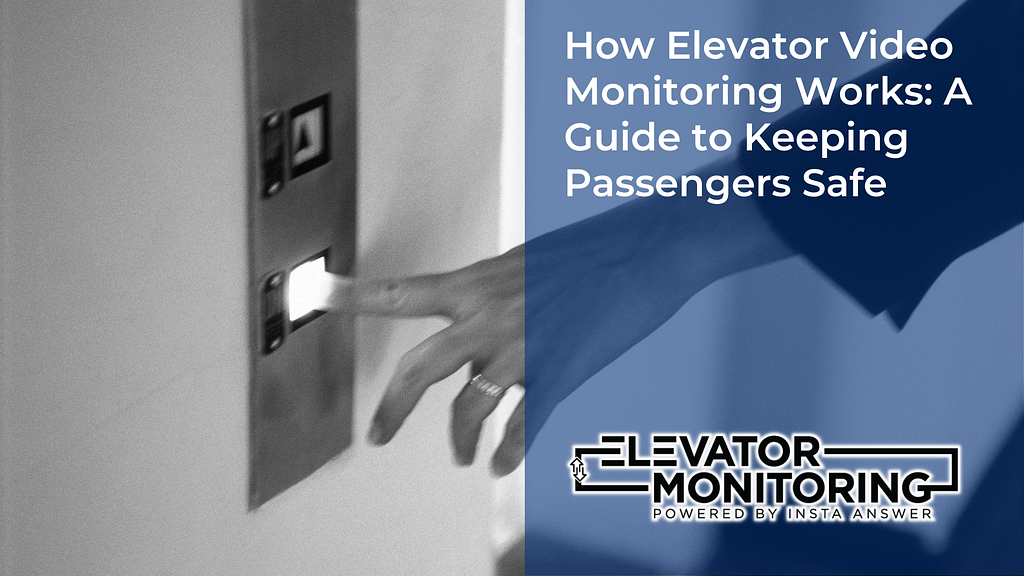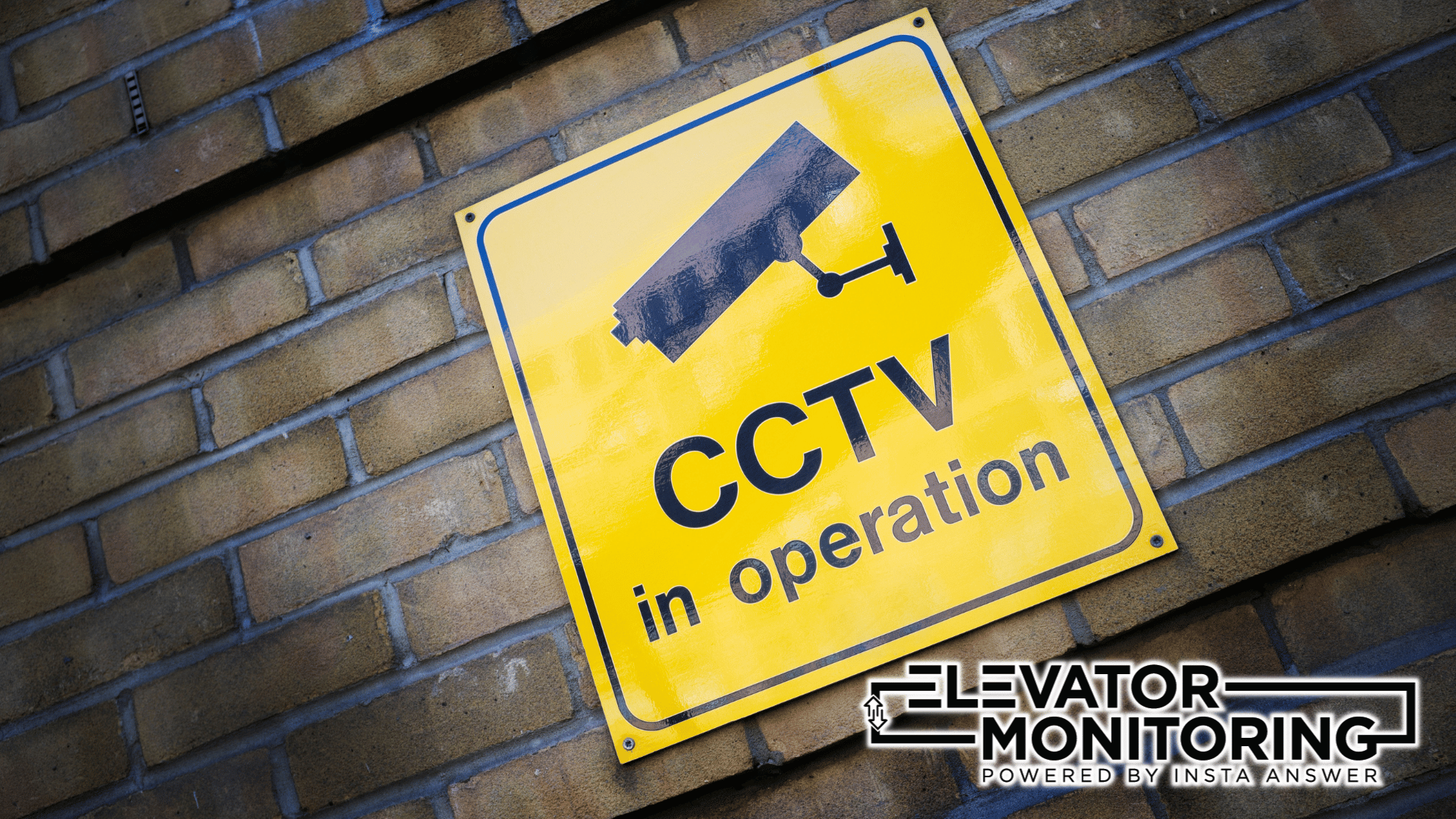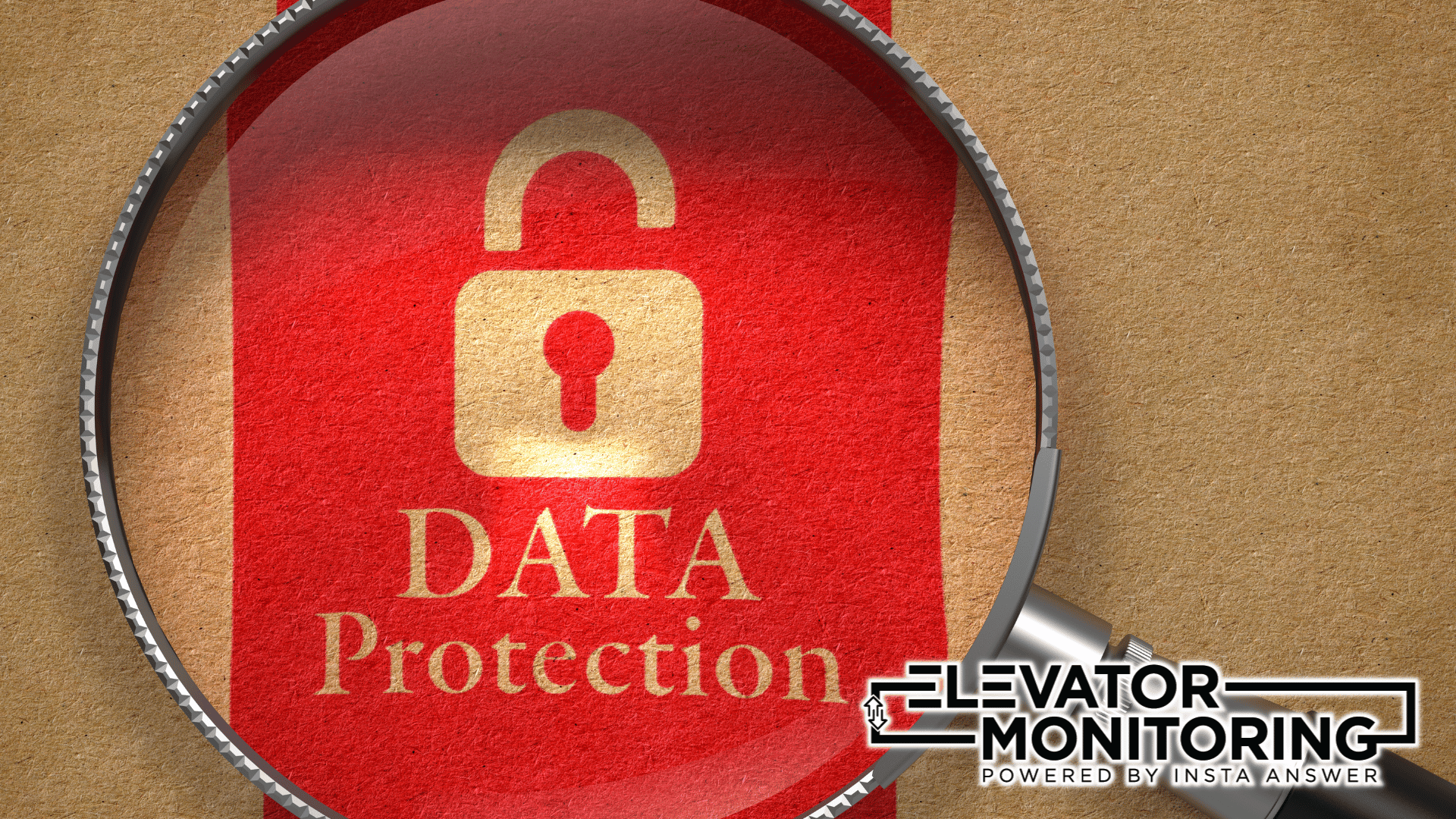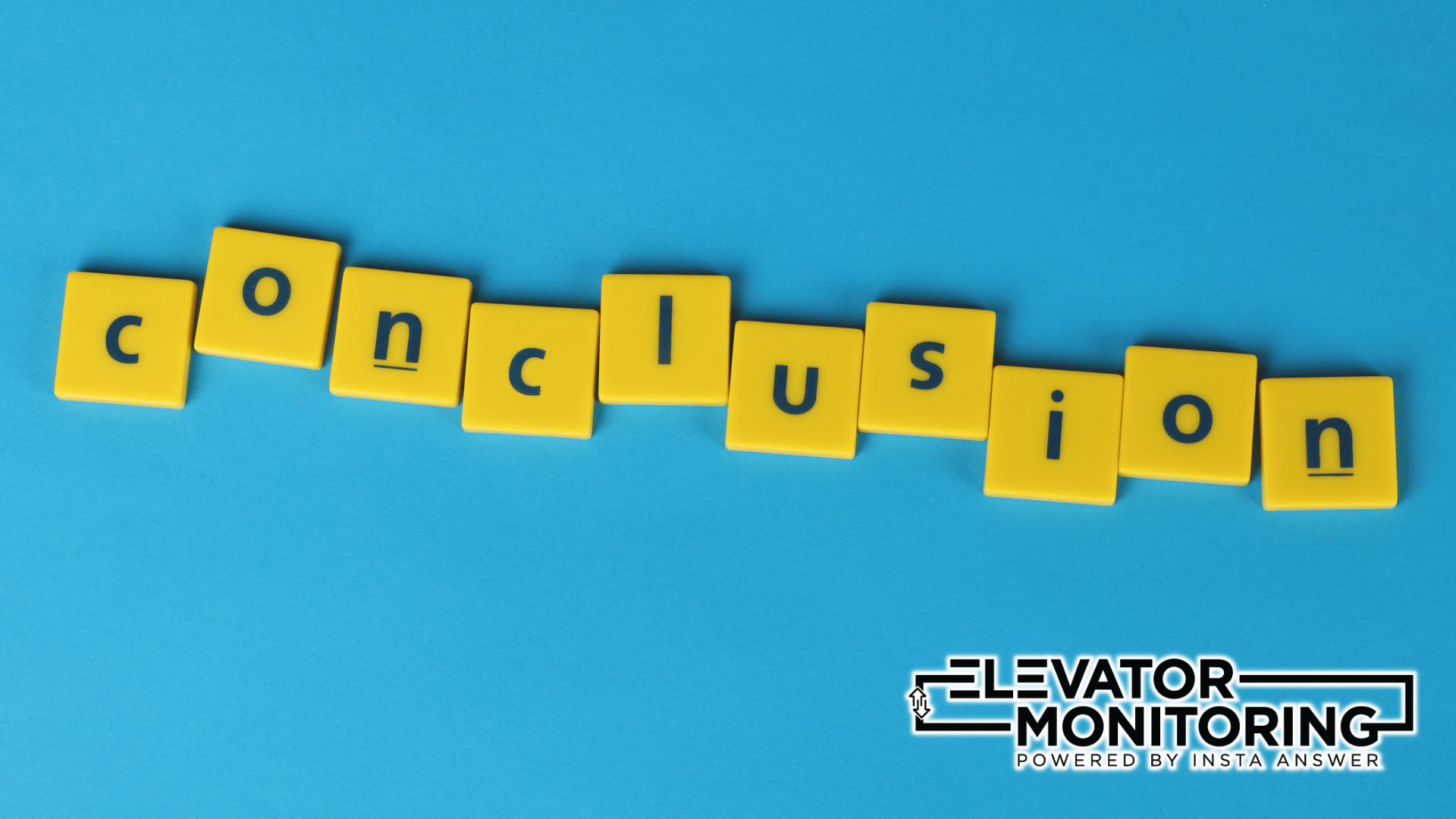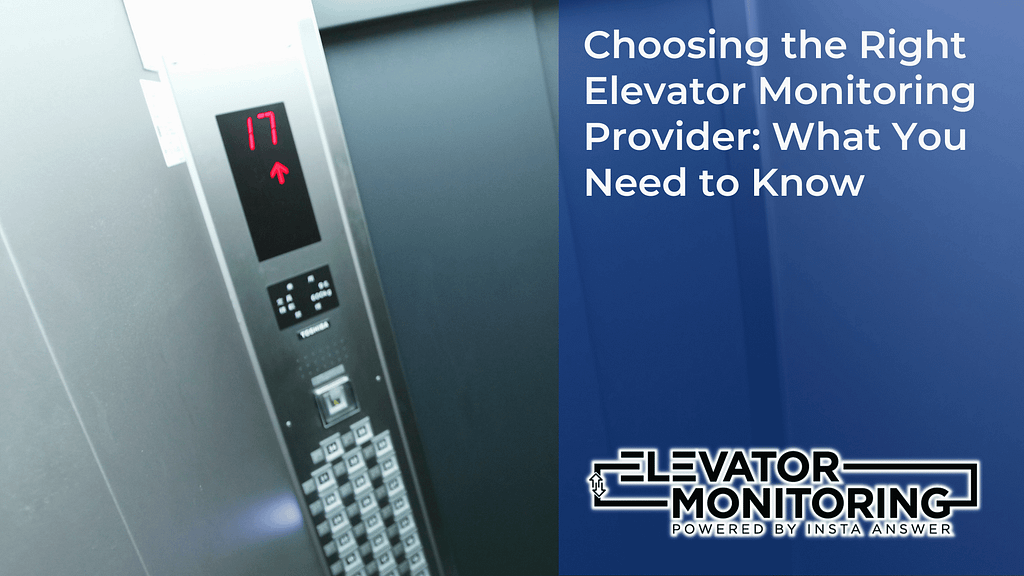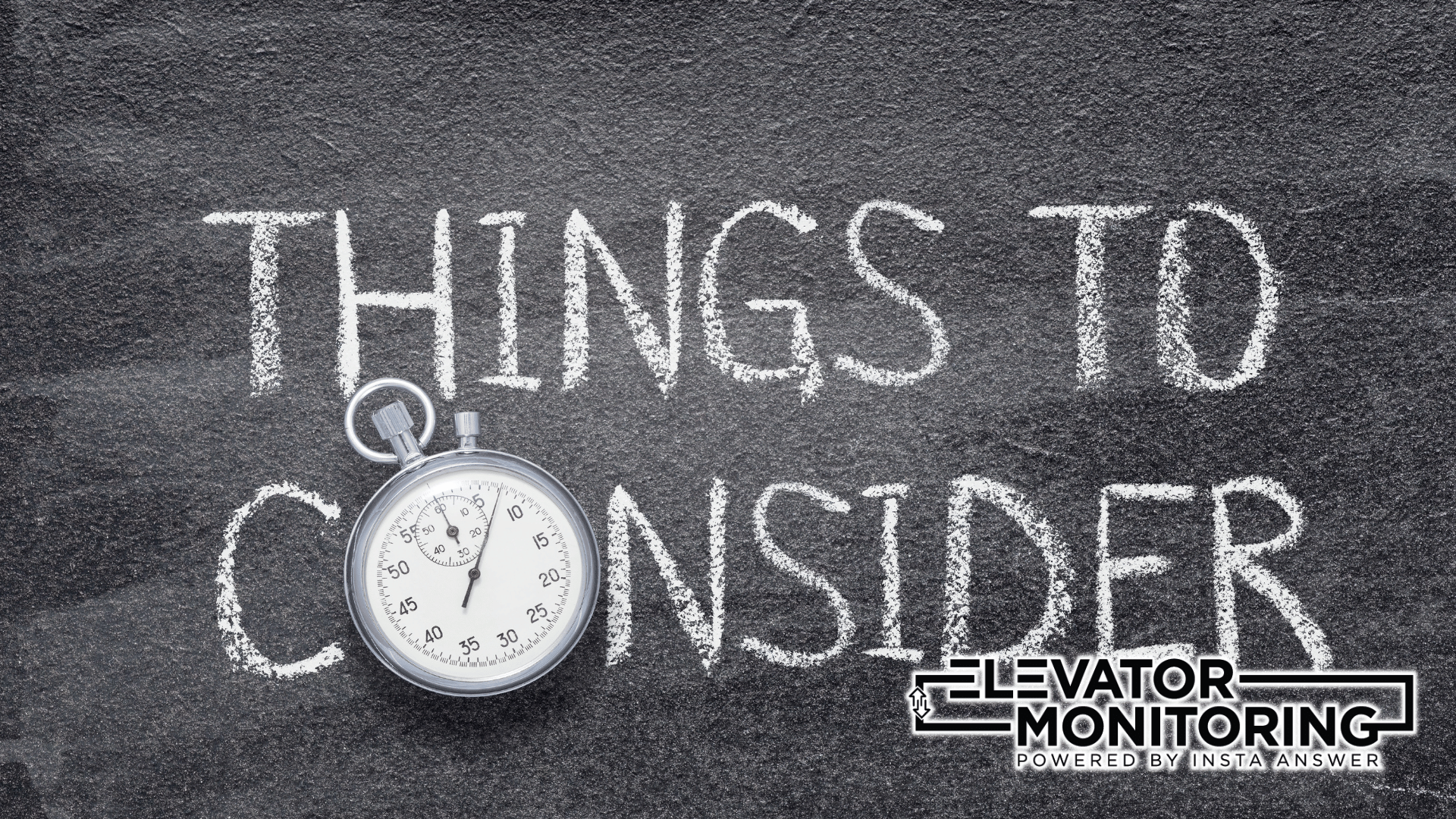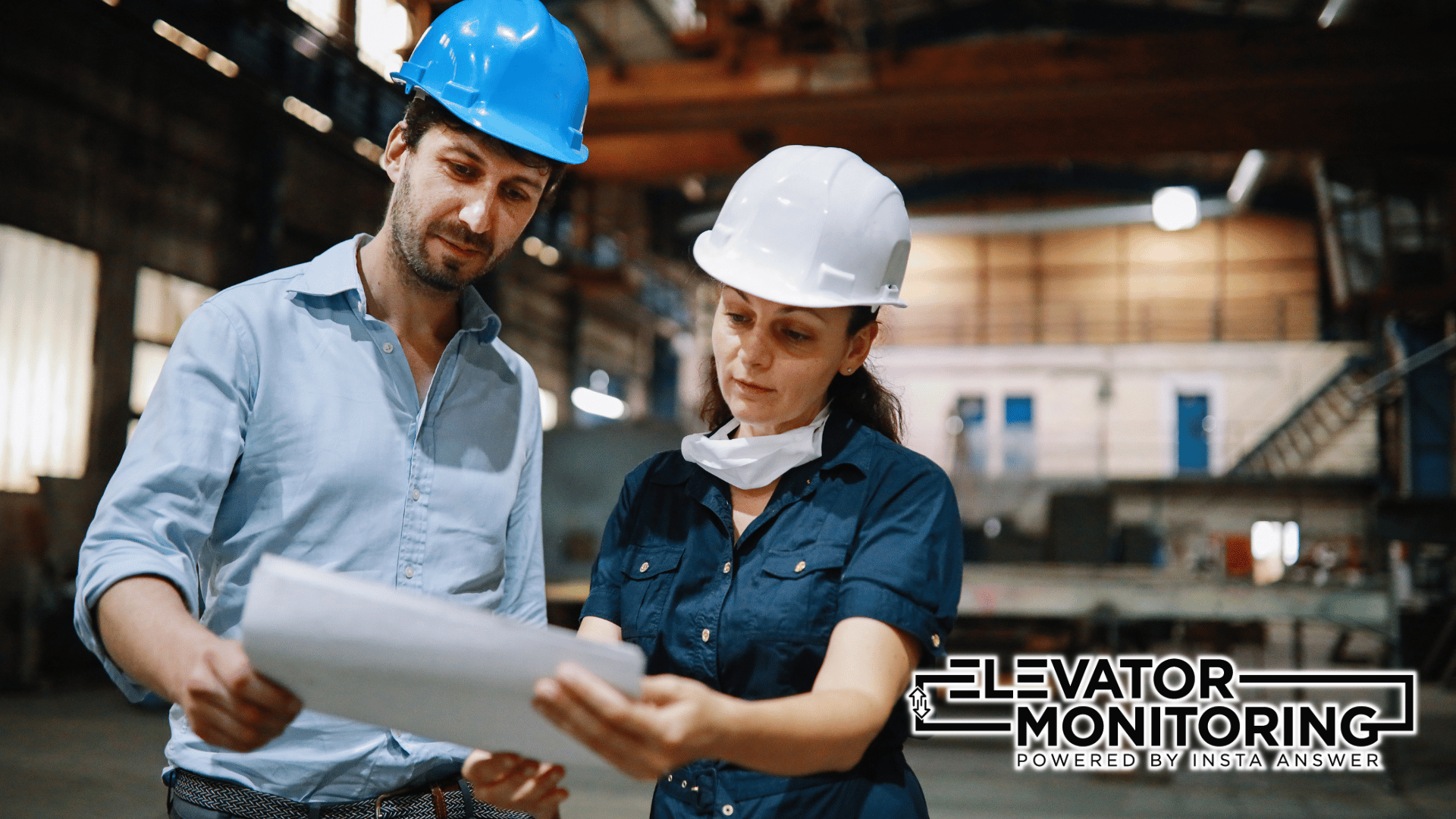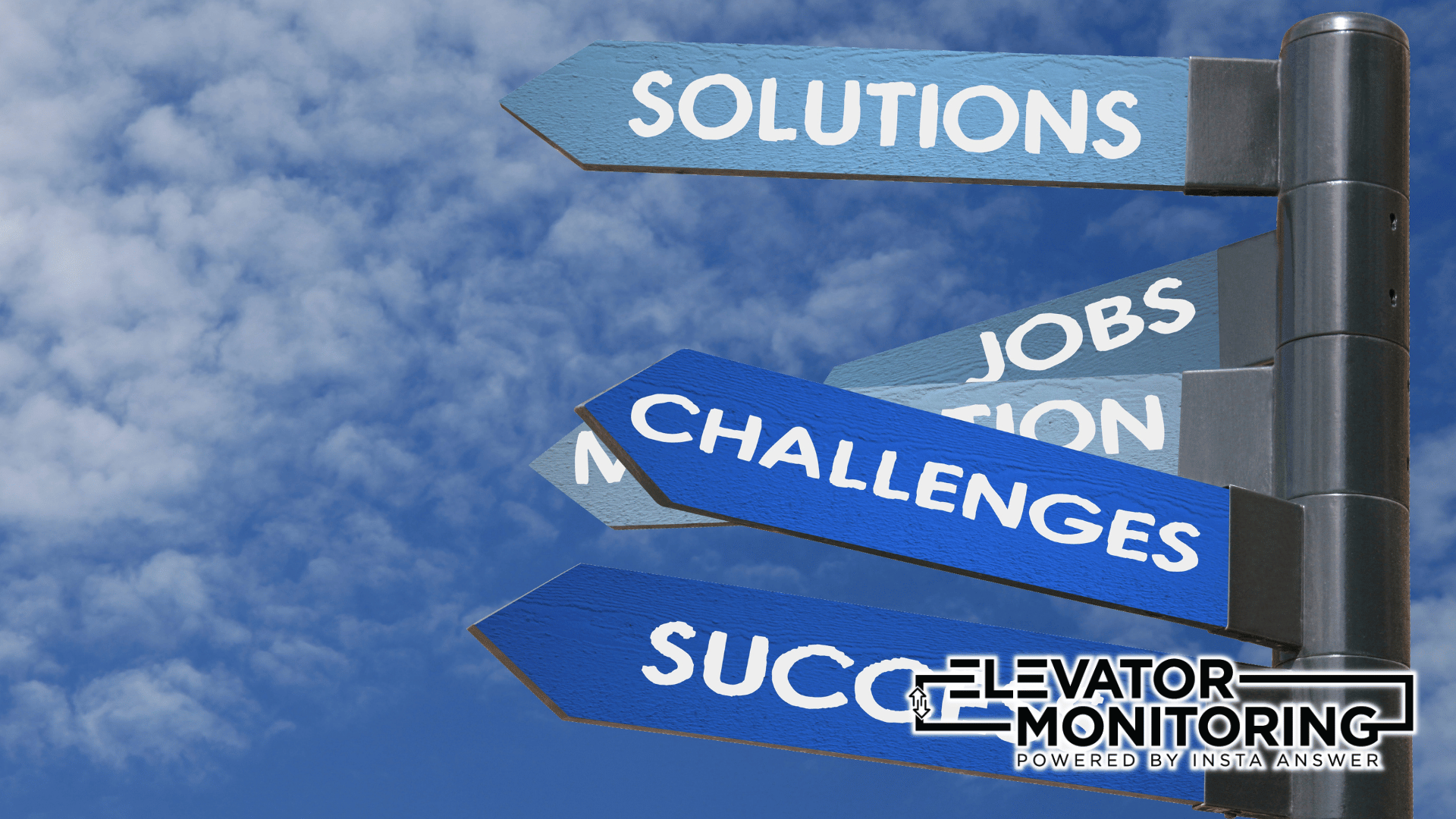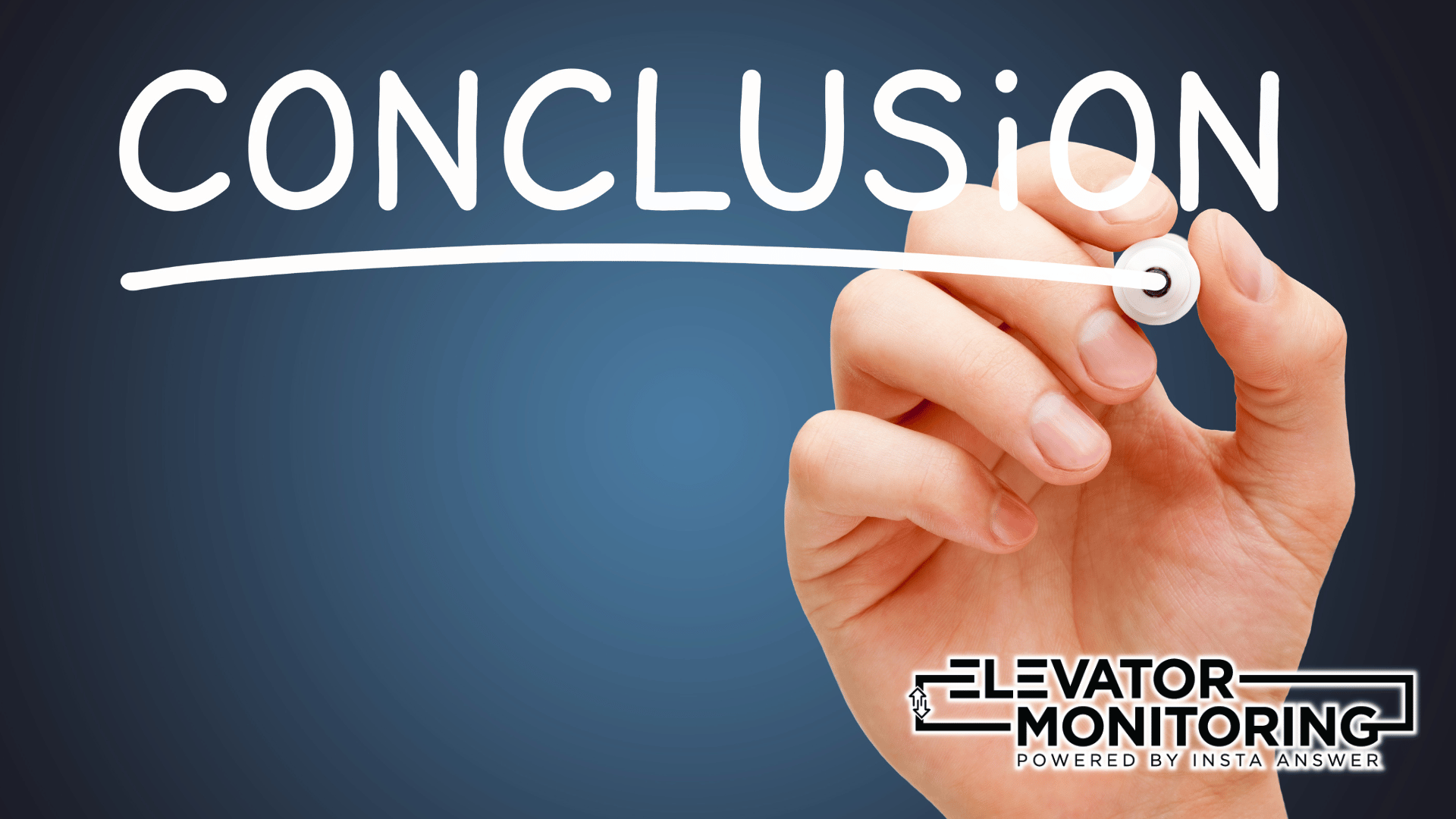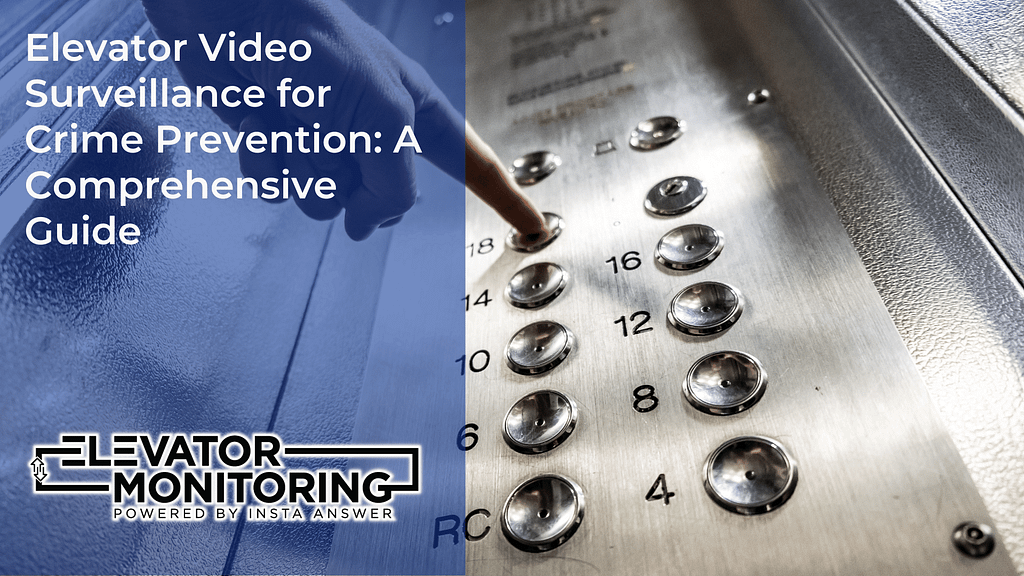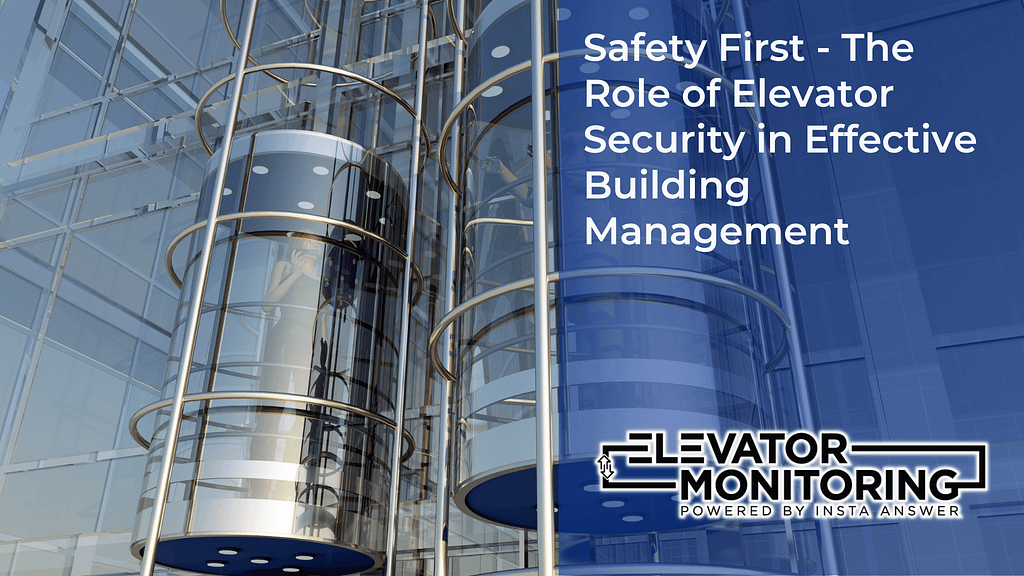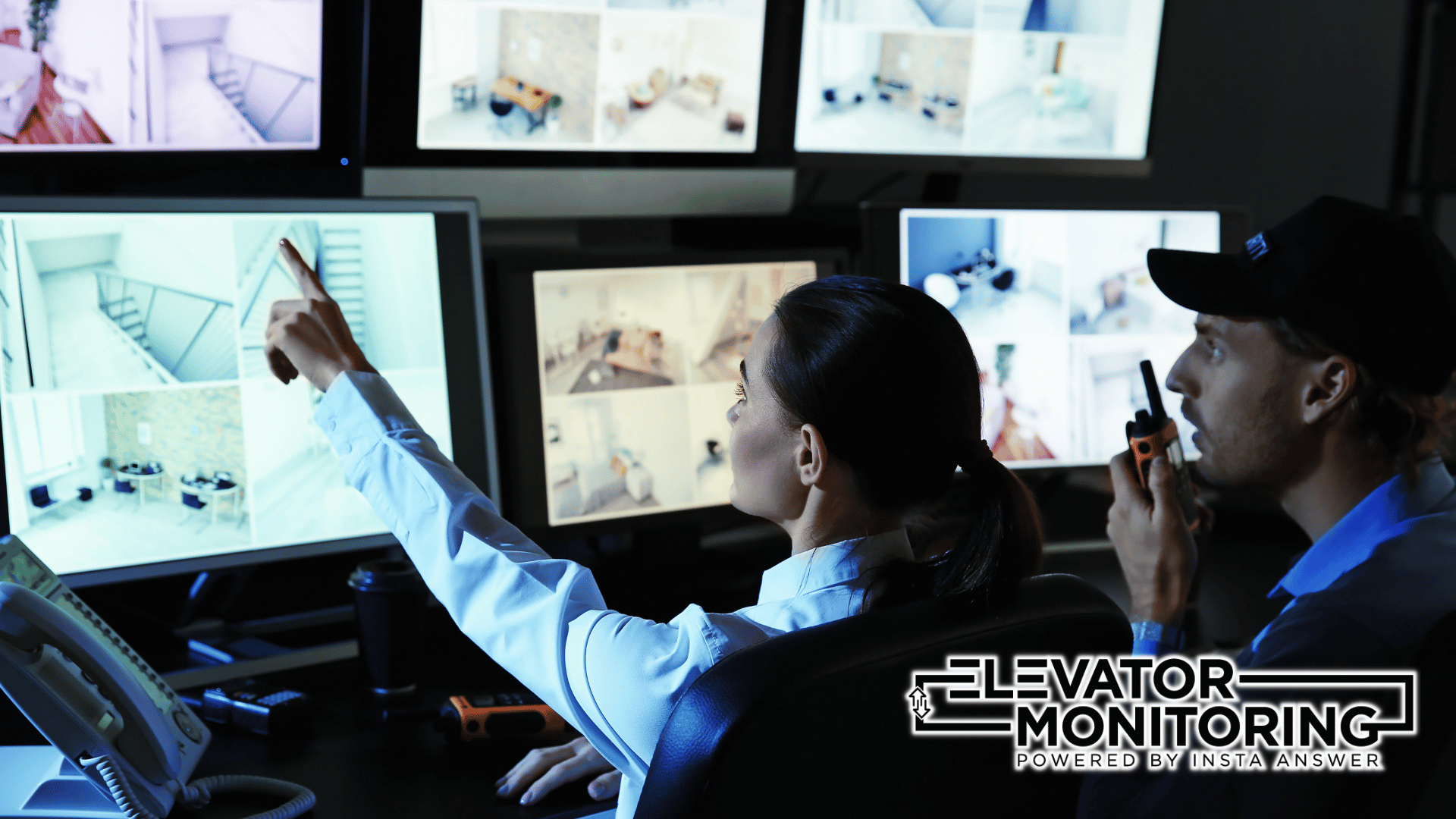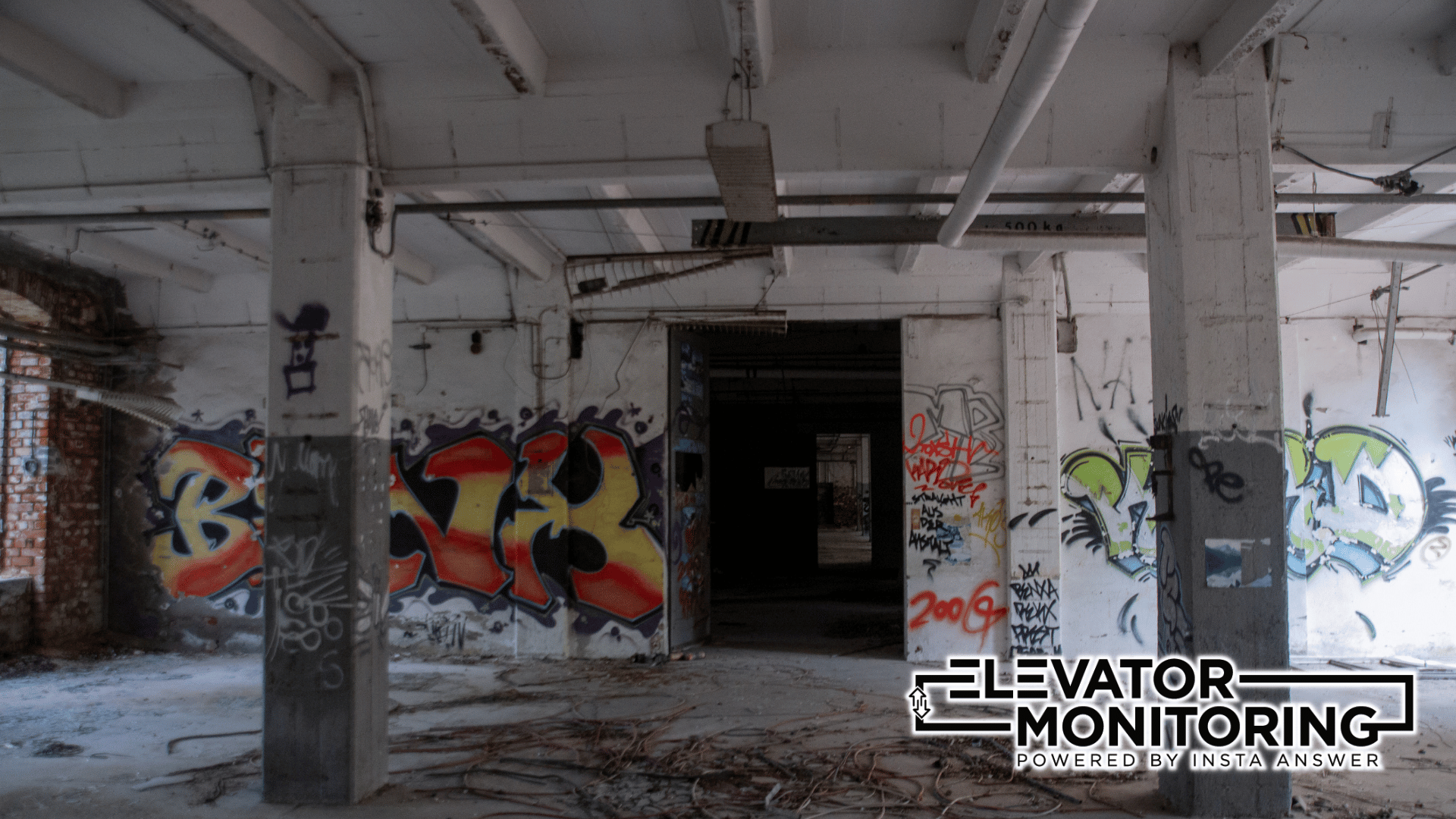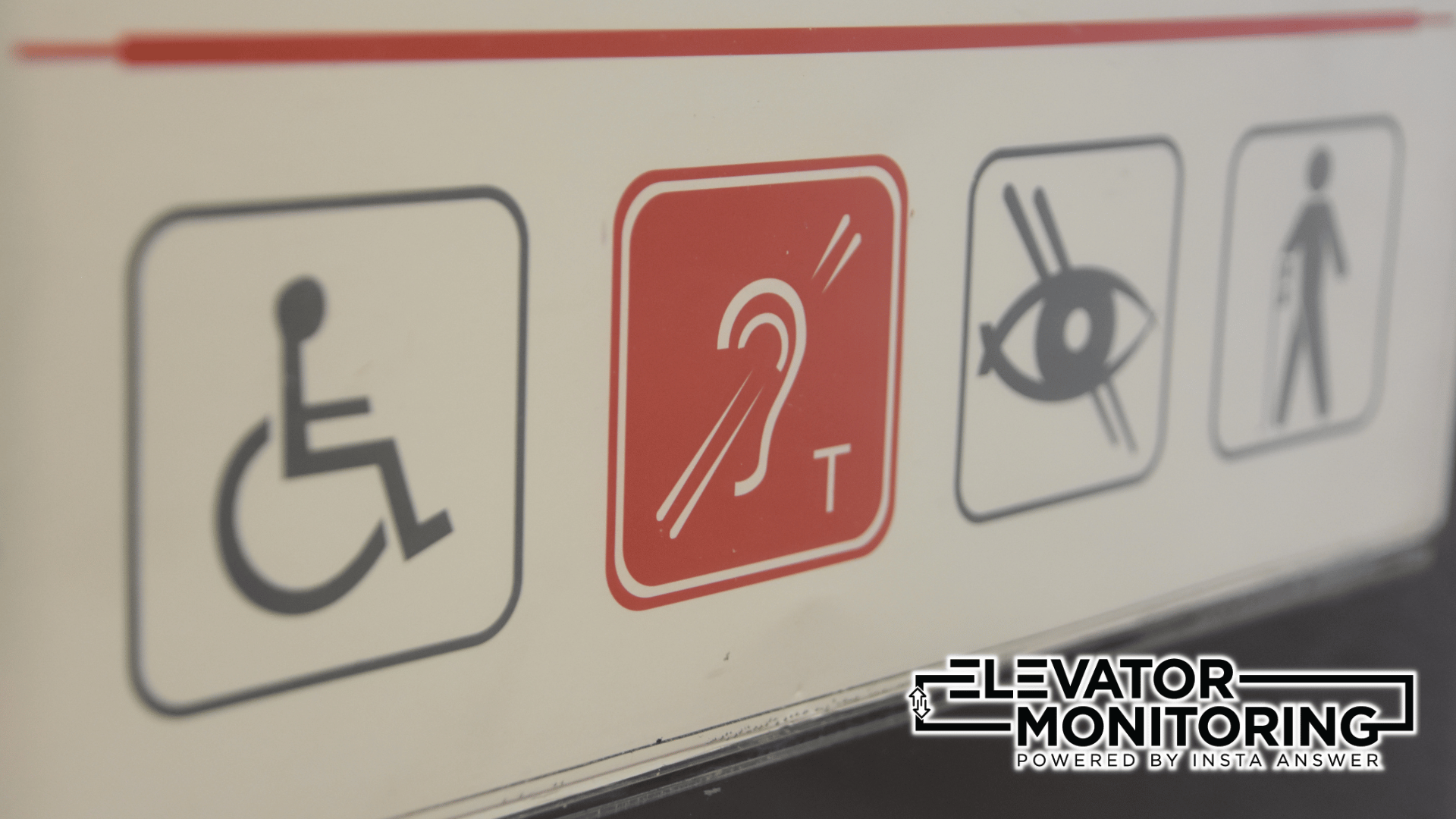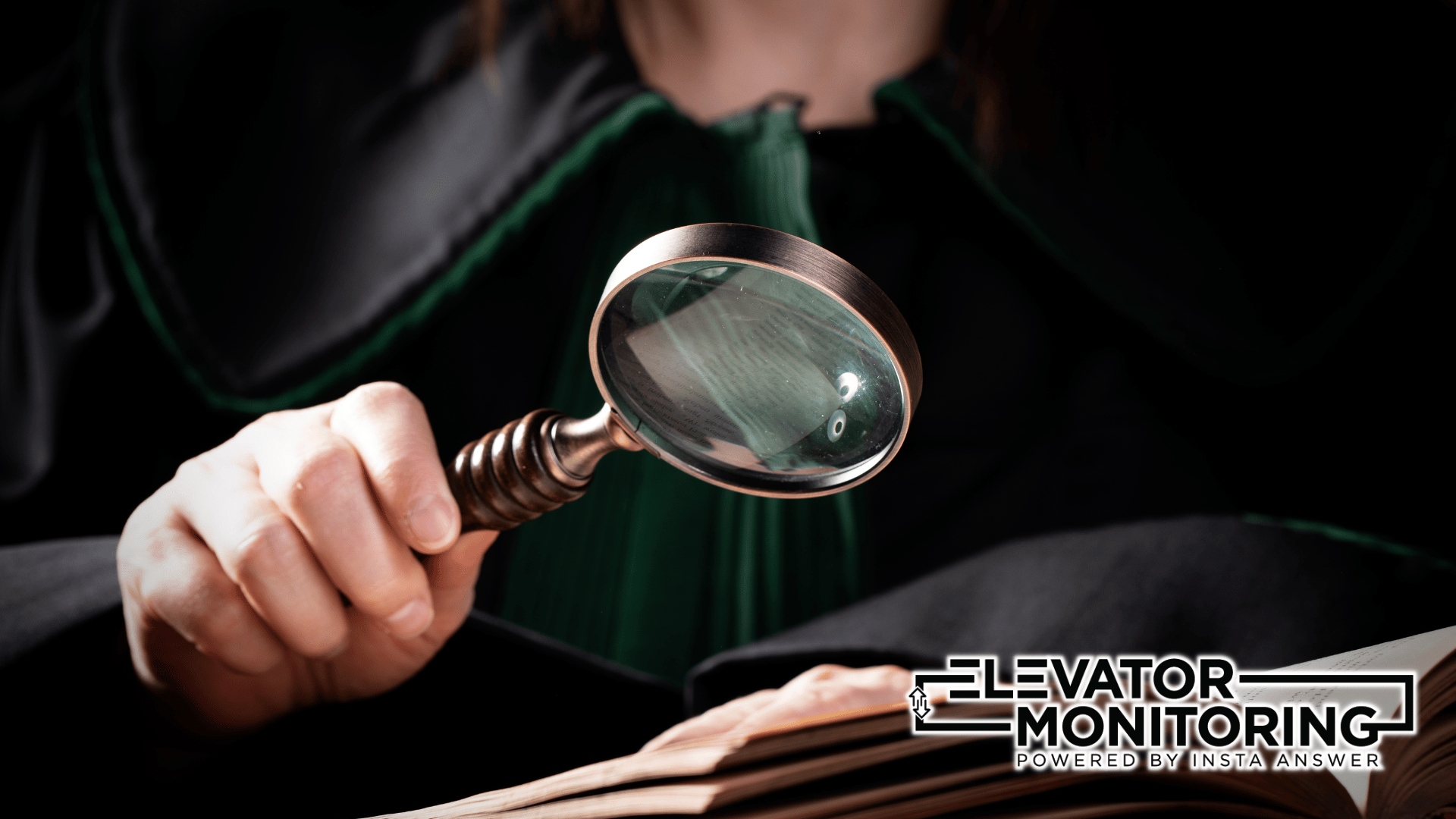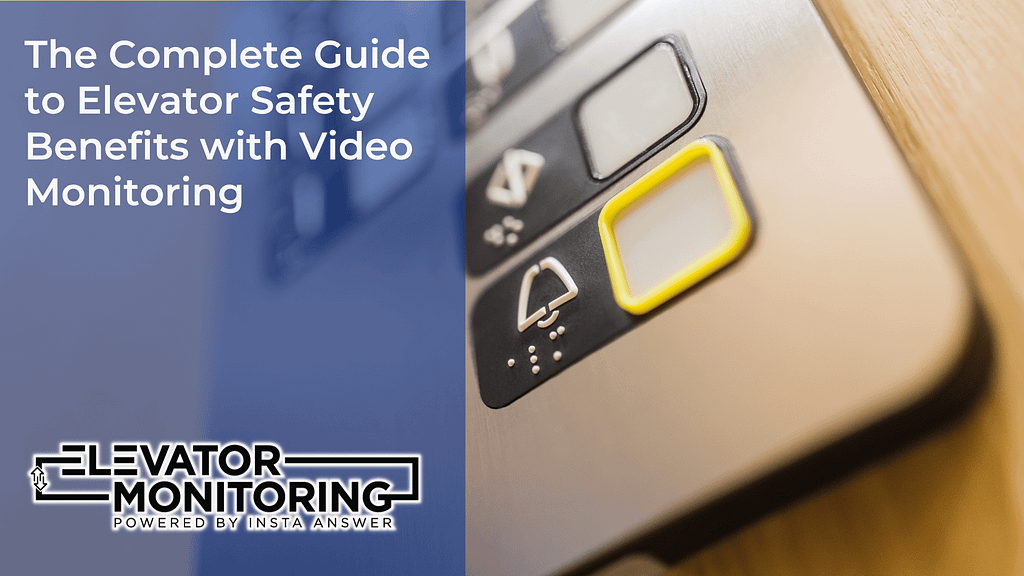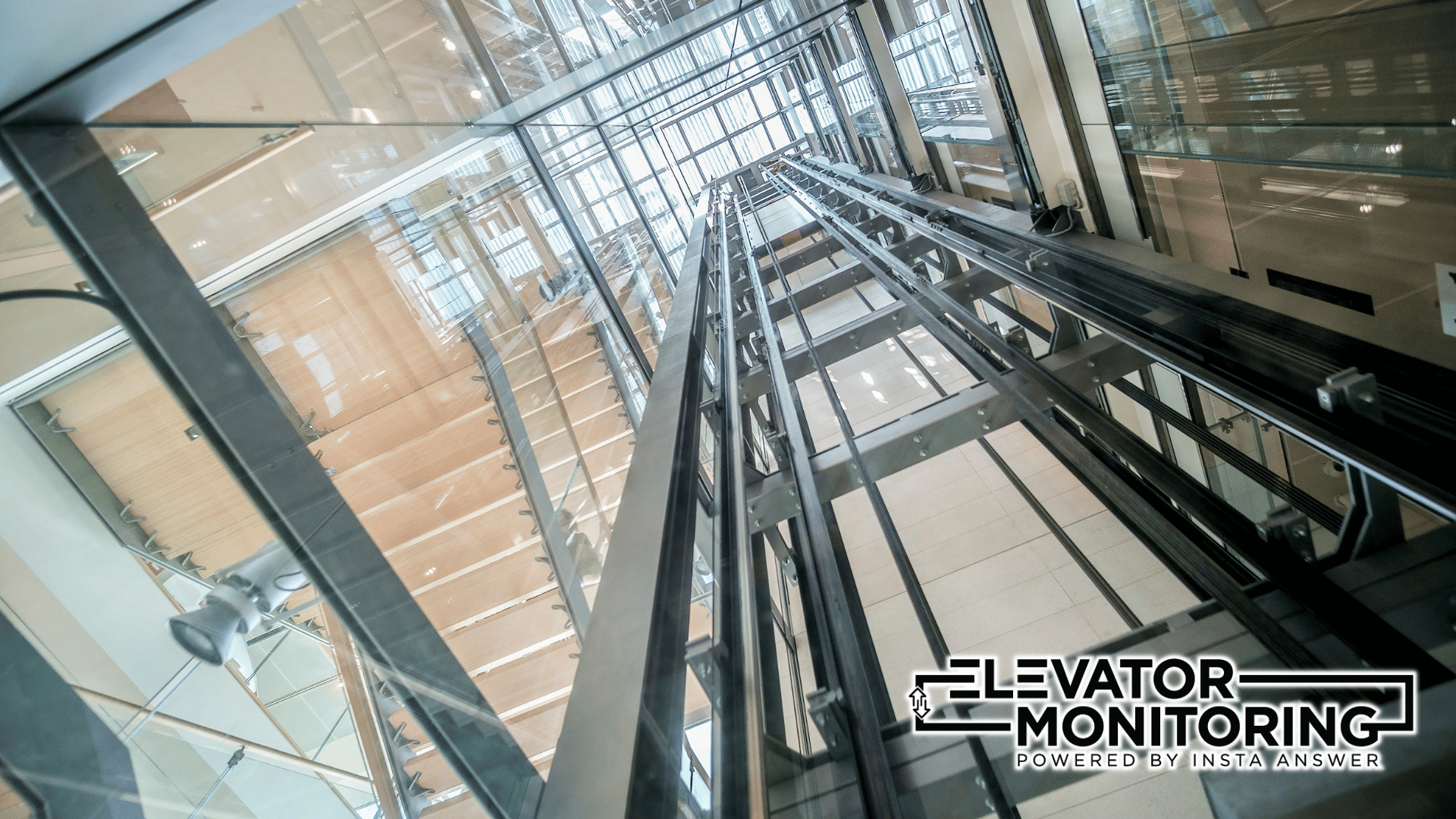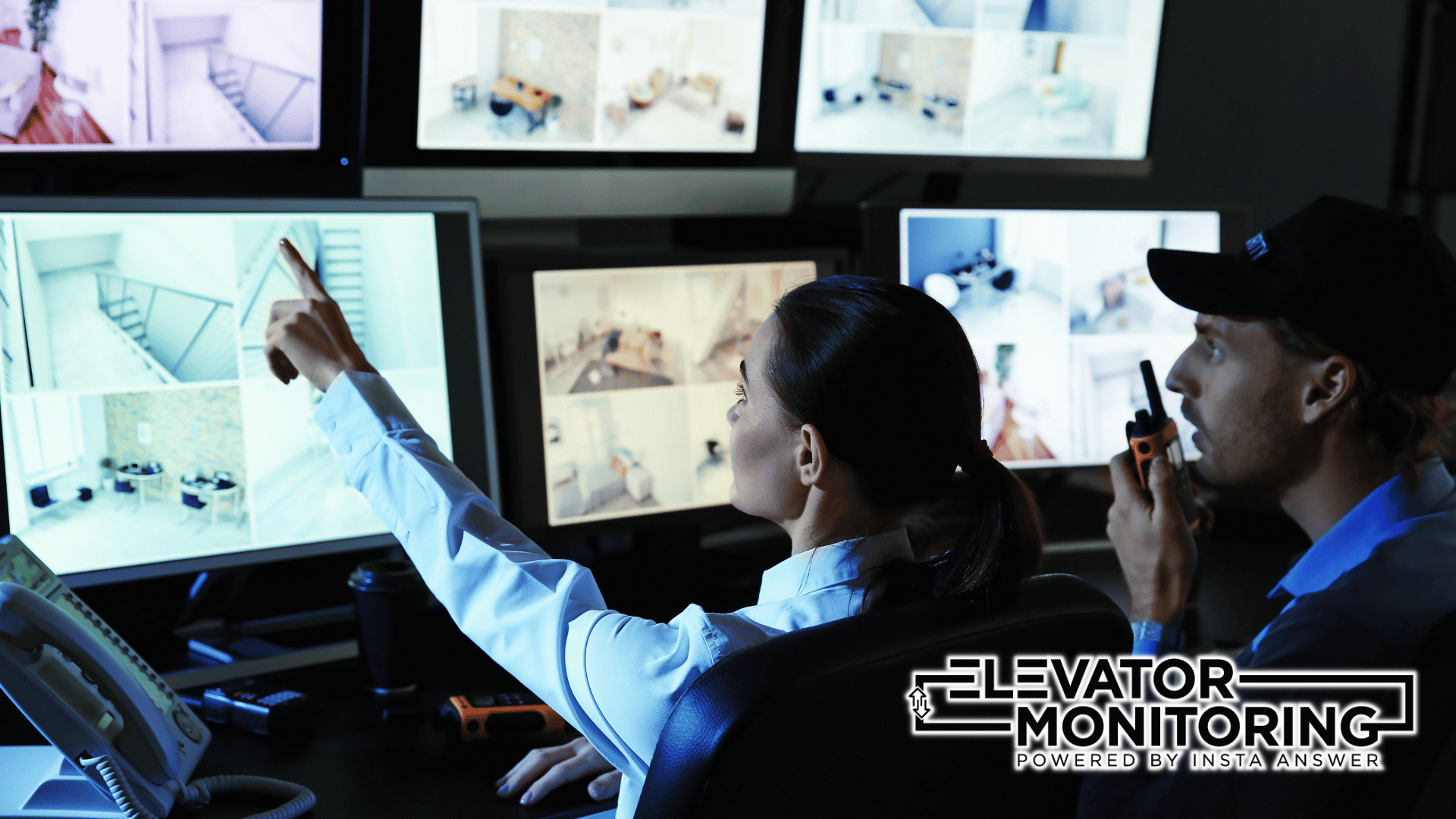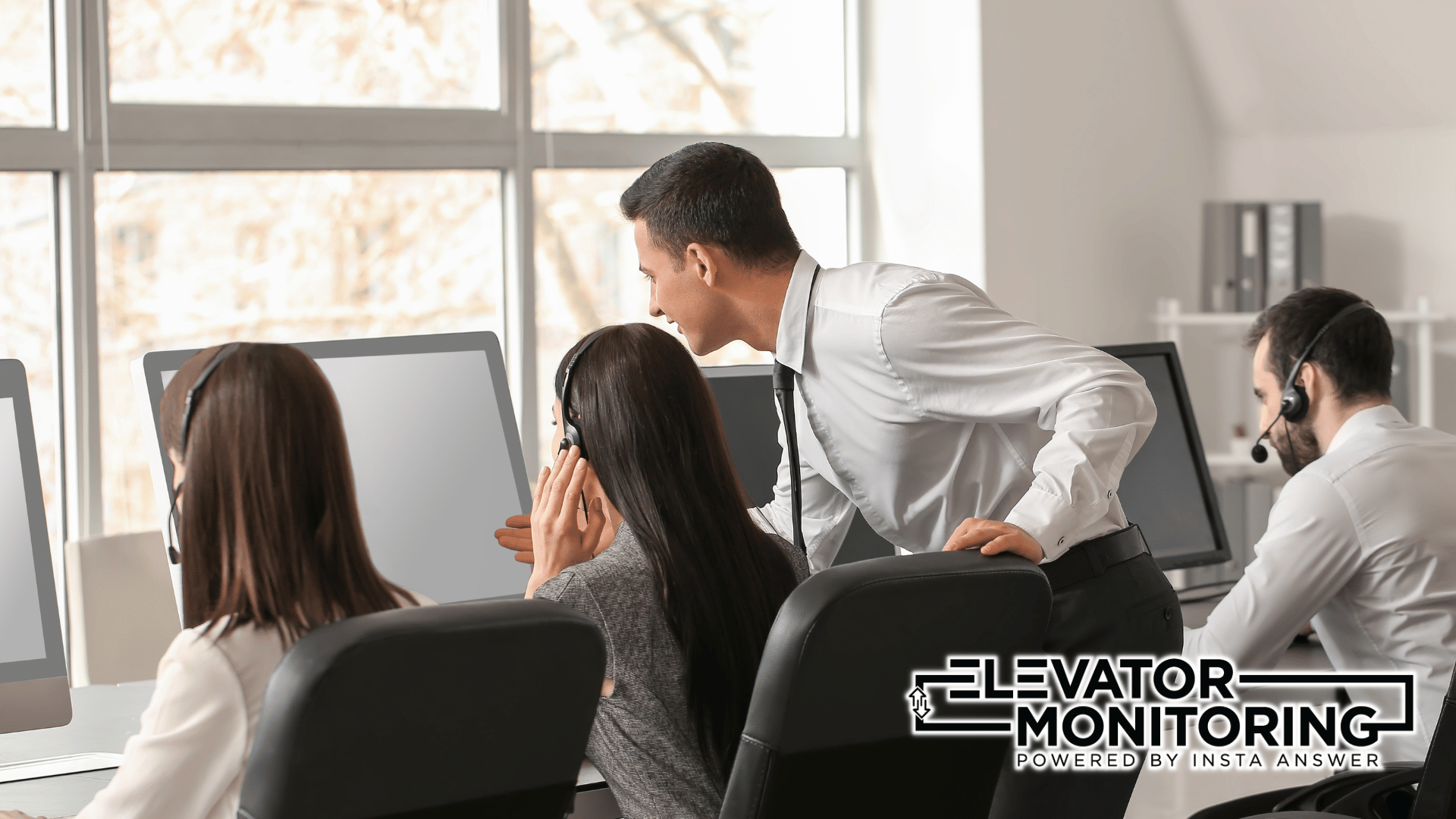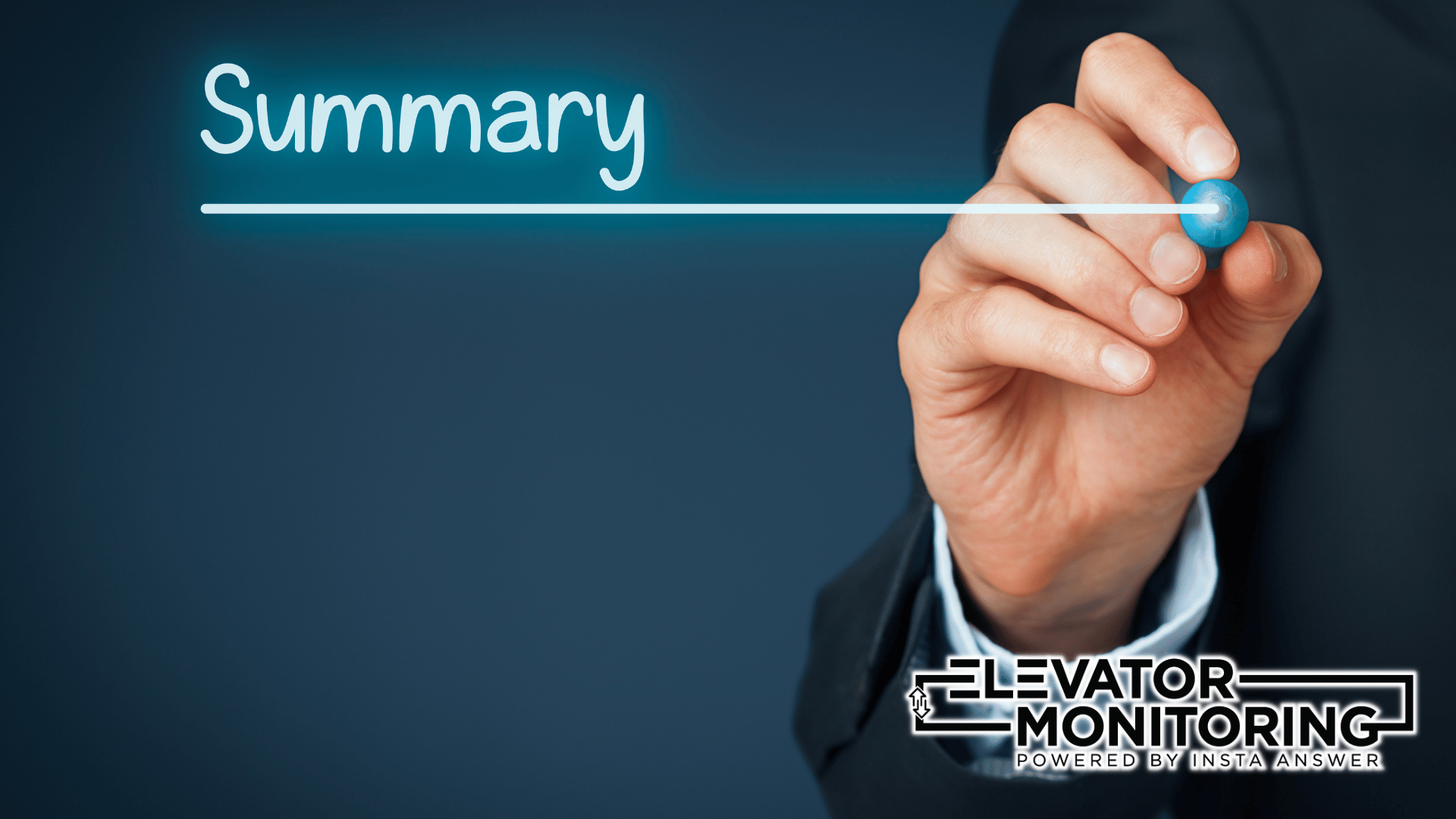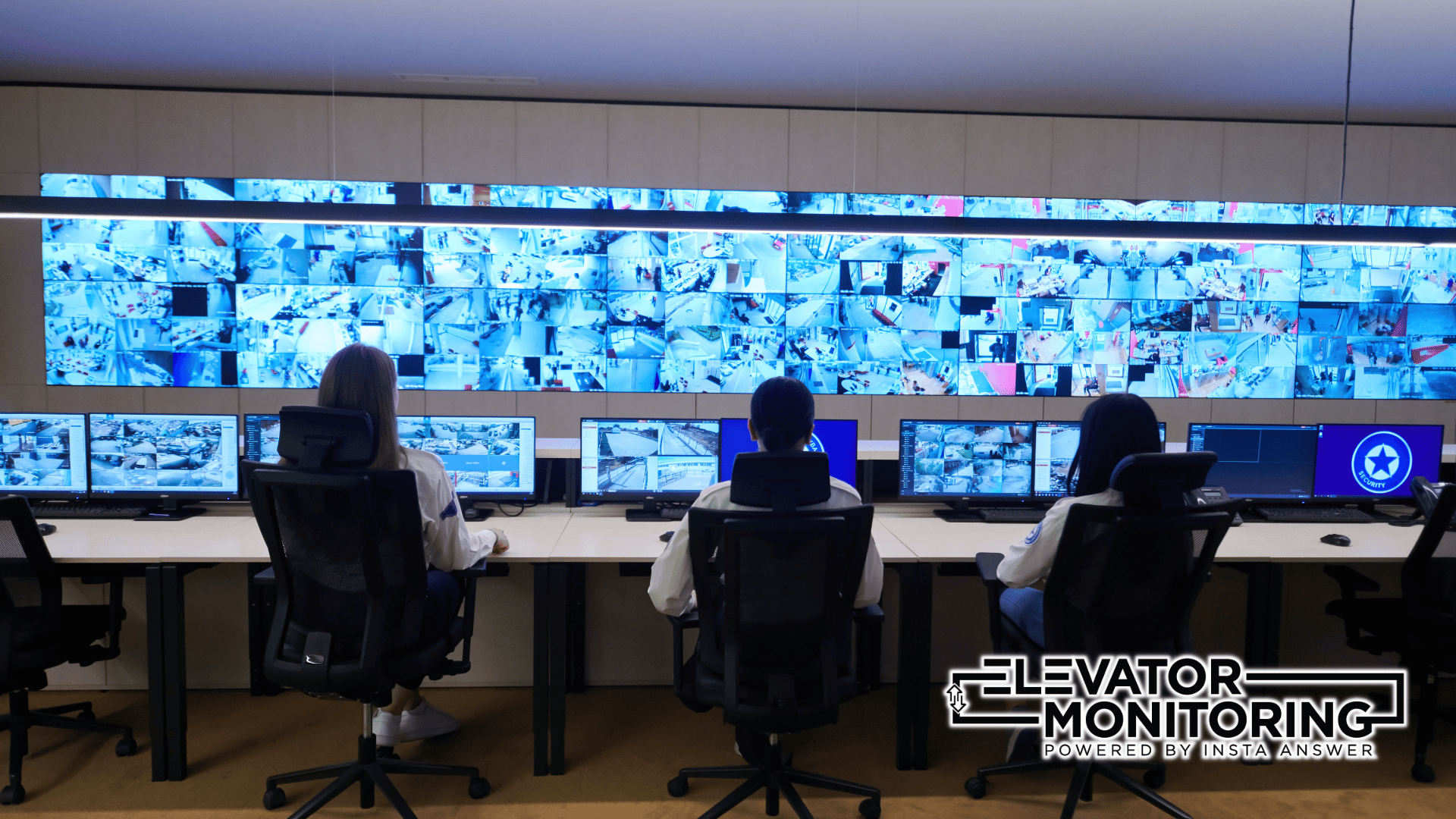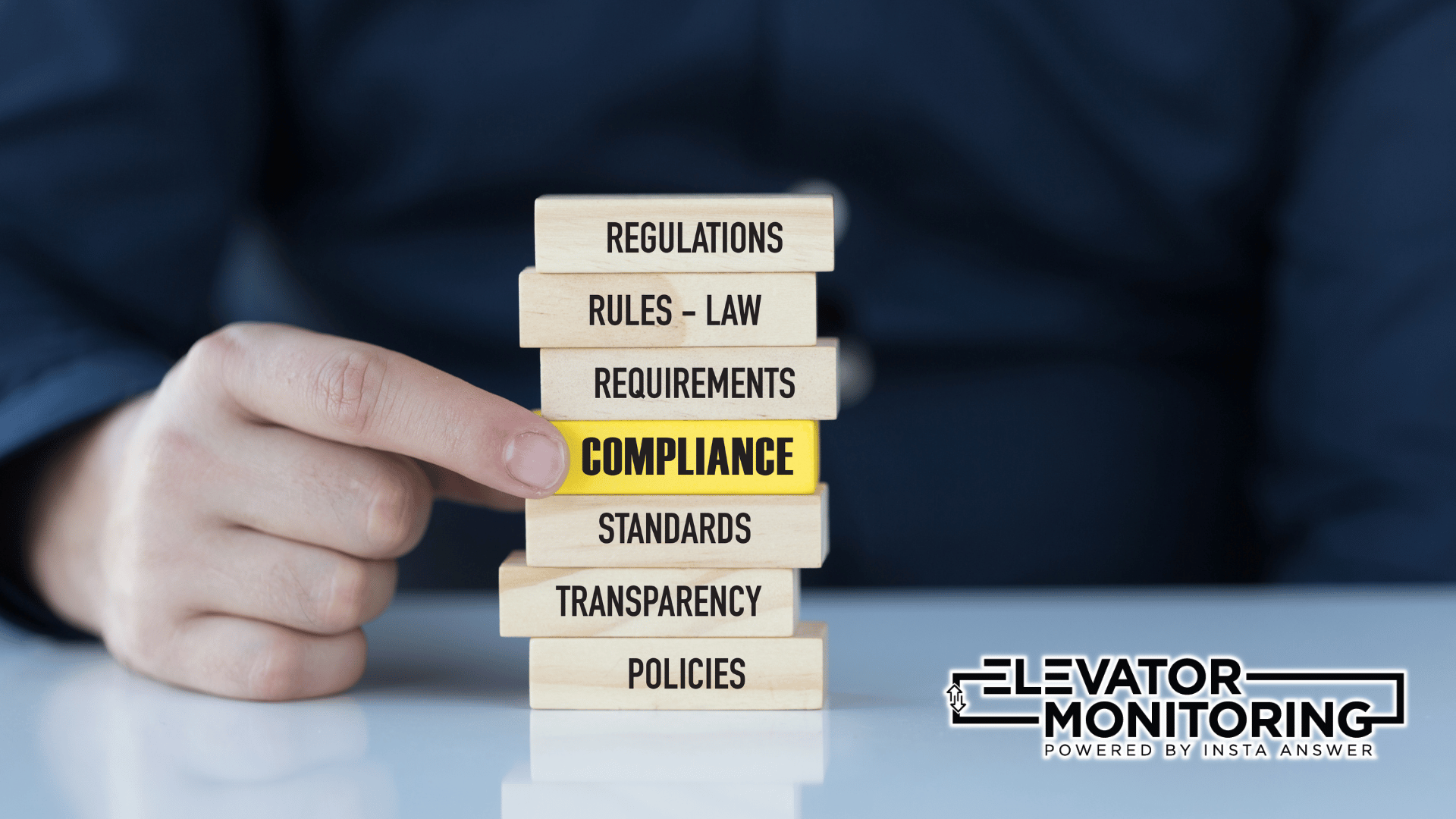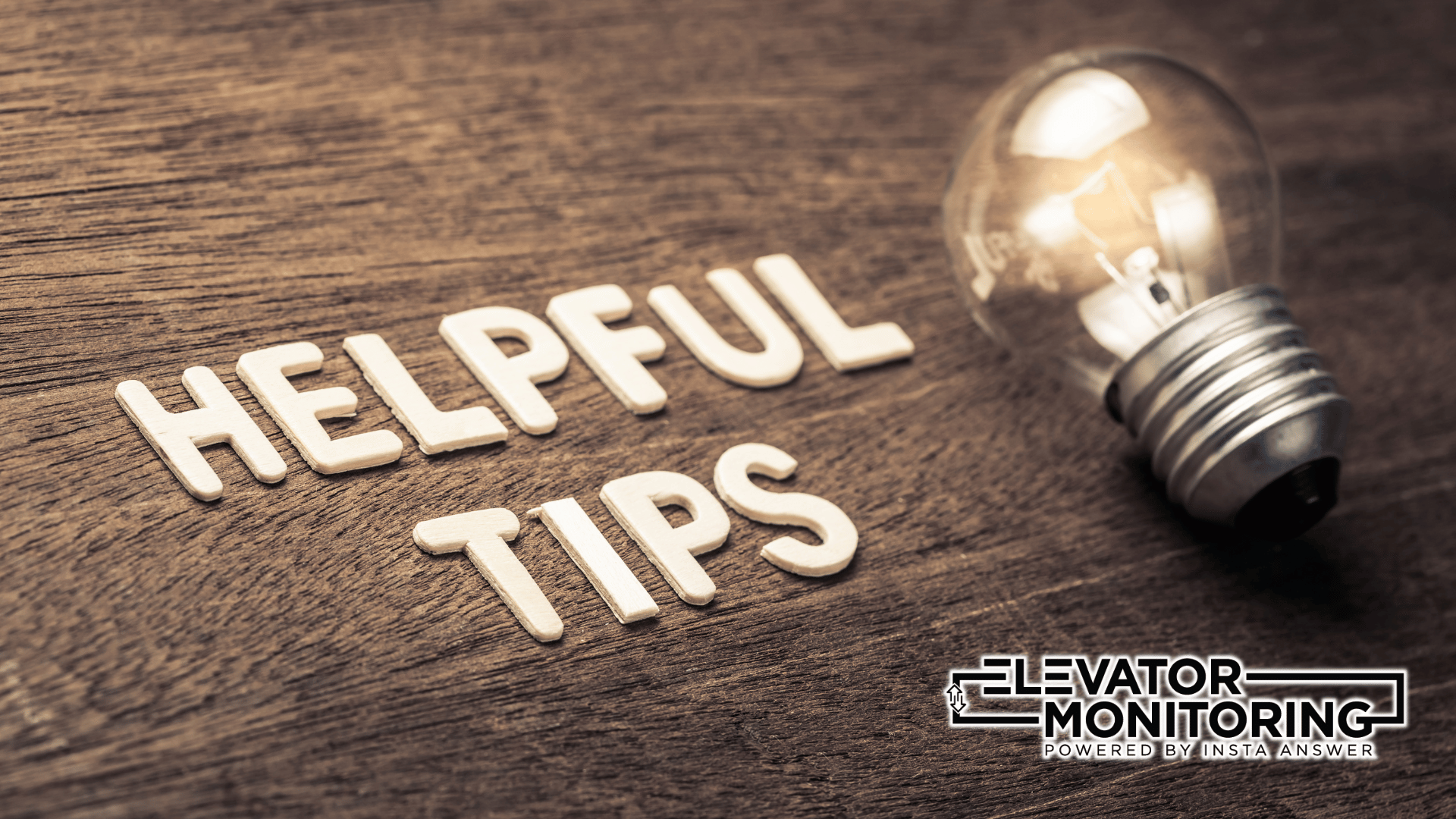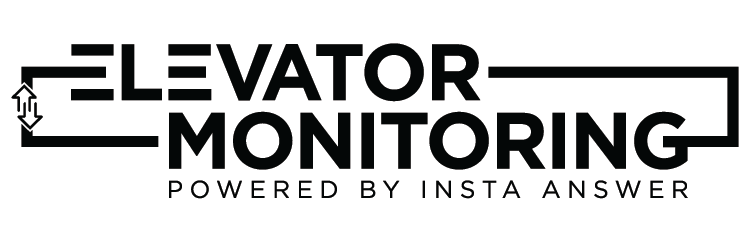Reading Time: 12 minutesWhy Your Building Needs Video Elevator Monitoring
Rather listen to the BlogCast for this post instead? Click the “Play” button below to hear it now.
Introduction
In today’s modern cities, up-and-down travel is as important as traversing streets horizontally. Therefore, in urban areas today, the value of video elevator monitoring in buildings cannot be emphasized too much. The importance of this technology goes beyond being a high-tech luxury; it is a crucial necessity for the safety and efficiency of modern high-rise structures. It represents a significant improvement in our approach to building management and security.
Video elevator monitoring is necessary in all buildings to guarantee safety, security, and efficient management. Therefore, in this article, we will examine why it is important to include video surveillance in elevators for modern buildings, with real data and practical insights to back it up.
Quick Rundown: Why Elevator Cameras are a Game-Changer
The integration of video surveillance in building elevators signifies a game-changing shift in property management. These systems play a crucial role in preventing criminal activities and increasing the safety of elevator users. Research shows that video surveillance can reduce elevator-related crimes a lot, highlighting the need for such technology in buildings.
In addition to safety, having video monitoring in elevators is crucial for efficiency. By analyzing elevator usage patterns, building managers and owners can optimize maintenance schedules and improve passenger experiences, making this technology essential in every building.
What This Article Covers
This article offers an in-depth exploration of why your building needs video elevator monitoring. Each section of this article will focus on different aspects, from increasing security to improving emergency responses, and provide a comprehensive view of the benefits of this video elevator monitoring. With that in mind, let’s get started.
Ramp Up Building Security
Implementing video monitoring in elevators is a key step in providing increased building security. The presence of videos cameras acts as a major deterrent to potential security threats and provides real-time monitoring. Of course, this type of monitoring is essential for preventing or responding to incidents in modern buildings.
With video elevator monitoring, building managers can quickly respond to security incidents. This not only enhances the safety of the occupants, but also contributes to the overall security posture of the building. Better security helps emphasize why such systems are necessary and makes video elevator monitoring an essential component of modern building management.

Keep Vandals and Crooks at Bay
One of the primary reasons a building needs video elevator monitoring is to deter vandalism and criminal activities. Statistics show a significant decrease in such incidents in buildings with active surveillance systems and video elevator monitoring, proving the efficacy of such systems.
We cannot overstate the psychological impact of video elevator monitoring. The presence of cameras in elevators discourages potential offenders, contributing to a safer and more secure environment for everyone.
Boost Emergency Responses
In emergencies, the role of video elevator monitoring is invaluable. Providing real-time visuals, it enables quicker and more accurate emergency responses, which is a critical need for any building.
For instance, in medical emergencies or technical malfunctions inside elevator cars, having access to live video feeds can expedite rescue operations considerably, underlining the necessity of this technology in buildings.
Speed Up Rescue Missions
In cases of entrapments or medical emergencies, elevator cameras help facilitate faster rescue missions. They provide essential visuals that aid in quick assessment and action during emergencies, showcasing why such systems are a vital part of building safety.
The ability to monitor situations live and in real time allows for a more coordinated and efficient response, making video elevator monitoring an important tool in emergency management for buildings.
For example, in cases of elevator entrapment or accidents, the real-time footage from elevator cameras can be crucial for rescue teams to assess the situation and plan the most efficient rescue strategy. Consequently, this capability underlines the critical need for video monitoring in modern building safety protocols.
The Value of Real-Time Video in Emergencies
One cannot overstate the value of real-time video in emergencies cannot when considering the need for video elevator monitoring in buildings. It offers an immediate assessment of the situation, which is essential for timely and effective emergency responses.
In instances such as medical emergencies or security breaches, being able to access live footage from elevators can make a significant difference in the outcome, reinforcing (even more) the argument for video elevator monitoring in buildings.

Stay Legal and Limit Liability
Incorporating video elevator monitoring can aid significantly in ensuring legal compliance and limiting liability for building owners and managers. Monitoring helps ensure compliance with safety and security regulations that are increasingly becoming standard in building codes.
By having a comprehensive surveillance system in place, buildings can protect themselves against potential lawsuits or claims related to incidents inside elevators. This is just another example of the need for such monitoring systems.
Meet Video Surveillance Regulations
Video elevator monitoring highlights the need to understand and meet surveillance regulations. Conducting monitoring in compliance with legal requirements ensures that the surveillance is ethical and within the bounds of the law.
This compliance is not just about avoiding legal repercussions; it’s also about maintaining a standard of privacy and ethics in surveillance, which is increasingly important in today’s society. Consequently, elevator video monitoring systems that adhere to these regulations are essential for responsible building management.
Guard Against False Claims
Video elevator monitoring also serves as a powerful tool in guarding against false claims and allegations. Video elevator monitoring provides objective evidence that can refute false accusations or claims made against the building owner or its management.
In situations where disputes arise over incidents that allegedly took place inside an elevator, the footage from elevator monitoring cameras can be invaluable in clarifying the facts and, thereby, protecting the building management from unwarranted liability.
Improve Operations and Efficiency
Video elevator monitoring is essential in improving the operations and efficiency of a building. For instance, a study by the International Facility Management Association showed that buildings with such systems experienced a 15% improvement in operational efficiency, as it helps identify and resolve issues more swiftly.
Building owners can also see an improvement in maintenance scheduling. Video elevator monitoring systems can alert building managers to potential mechanical issues before they become major problems. According to a report from the Building Owners and Managers Association, building management teams typically enjoy a reduction in maintenance costs when using video surveillance.
Spot Mechanical Problems Beforehand
Proactively identifying mechanical problems is a key advantage of video elevator monitoring. Elsevier’s “Computers and Electrical Engineering” shows that video analytics prevent expensive elevator breakdowns and repairs by helping to identify underlying issues.
This early detection not only saves on repair costs but also minimizes downtime, enhancing the overall usefulness and functionality of the building. Such preventive measures are essential in modern building management, demonstrating the value of video monitoring systems.
Enhance Elevator Functionality
Enhancing elevator functionality is another significant reason buildings need video monitoring. For example, with data collected from cameras, building management teams can analyze peak usage times, allowing for more efficient scheduling of elevators, as noted in a study by the National Elevator Industry, Inc.
Elevator usage and scheduling optimization leads to reduced wait times for users and a more pleasant experience overall. The ability to tailor elevator operations based on actual usage patterns is a direct benefit of video monitoring, making it an essential tool for modern buildings.

Increase Tenant Trust and Happiness
The presence of video elevator monitoring significantly increases tenant trust and happiness. Research by Building Owners and Managers in Greater Los Angeles revealed that buildings with elevator surveillance systems saw a considerable increase in tenant satisfaction ratings, attributing to a heightened sense of security and responsiveness.
However, this enhanced trust is not just about safety; it also relates to the efficient management of the building. Tenants appreciate the proactive approach to maintenance and security that monitoring provides. This is demonstrated in a case involving one of our client’s buildings, a residential complex in Seattle, where tenant retention rates improved by over 20% after we installed a video monitoring systems in the building.
Create a Safer Environment
Creating a safer environment is perhaps the most important reason for having video elevator monitoring in buildings. The International Journal of Online Engineering published a report showing a significant decrease in elevator-related accidents and incidents in buildings with active surveillance systems.
This decrease is due to deterring malicious activities and promptly addressing safety hazards, highlighting the importance of video monitoring for building occupants’ safety.
How Visible Security Builds Tenant Confidence
Visible security measures, such as video elevator monitoring, play a significant role in establishing tenant trust and confidence. A study by the Property Management Association found that visible security measures are among the top factors considered by tenants when choosing a residential building, which underscores their importance.
The assurance that comes with knowing their environment is being monitored with video cameras adds to tenants’ peace of mind. Studies show that 60% of tenants in buildings with elevator cameras reported feeling safer, demonstrating the impact of visible security on tenant perception and comfort.
Gather and Act on Tenant Feedback
Video elevator monitoring also enables building managers to gather and act on tenant feedback more quickly and effectively. For instance, a review of video footage might reveal usage patterns and highlight areas for improvement, as stated in many reports and surveys regarding tenant satisfaction.
This ability to respond to tenant needs based on actual usage data enhances the overall living and working experience in larger buildings. Additionally, it fosters a responsive management approach, further increasing tenant satisfaction and loyalty.
Save Money in the Long Run
Investing in video elevator monitoring systems can lead to significant cost savings in the long run. Financial studies show that buildings with video monitoring systems experience a 20% reduction in security costs when compared to buildings without video surveillance.
Furthermore, early detection of maintenance issues, as previously discussed, results in lower repair costs and less elevator downtime. Consequently, the long-term financial benefits of video elevator monitoring systems make them a wise investment for building owners.
Benefit from Cost-Effective Maintenance
Cost-effective maintenance is yet another compelling reason for buildings to implement video elevator monitoring. The Building Owners and Managers Association International found that preventive maintenance based on video monitoring data can reduce overall maintenance costs by up to 30%.
This reduction in costs is due to the timely addressing of minor issues before they become major problems repairs, underscoring how video monitoring contributes to the financial health of a building. For instance, The Elevator Consultants research shows that regular monitoring can extend the life of elevator components, highlighting the long-term benefits of such surveillance.
Cut Down on Security Staffing
Implementing video elevator monitoring in your building can significantly reduce the need for extensive security staffing. Comparative studies show that buildings with comprehensive video surveillance systems generally require 30-40% fewer security personnel on average, resulting in substantial staffing cost savings.
Furthermore, this reduction in staffing needs does not compromise the security of the building. Instead, it allows building managers to allocate resources to other critical areas, showcasing the efficiency and cost-effectiveness of video elevator monitoring systems.
An ElevatorMonitoring.net client building, a commercial building in New York, was able to reduce its security staff by 40% while maintaining high security standards, thanks to the installation of an advanced video elevator monitoring system.
Make Everyone’s Life Easier
Video elevator monitoring systems contribute significantly to making life easier for both building managers and occupants. For instance, surveys by building management groups found that buildings with video monitoring systems reported a 50% reduction in complaints related to elevator functionality.
This ease of management and enhanced user experience makes video monitoring systems a valuable addition to any building, simplifying operations and ensuring a smoother experience for all involved.

Support for People with Disabilities
Video monitoring in elevators is particularly beneficial for supporting people with injuries or disabilities. Elevator industry experts report that such systems help in identifying and addressing the specific needs of disabled individuals, ensuring their safety and comfort in using elevators.
For example, cameras can help in monitoring and quickly responding to situations where individuals with disabilities might require assistance, demonstrating the inclusive nature of these systems. In a pilot program run by the Disability Rights Advocacy Center, the installation of cameras in building elevators was found to significantly enhance the safety and independence of disabled occupants.
Streamline Elevator Use
Streamlining elevator use is another key advantage of video monitoring. By analyzing usage patterns, building managers can optimize elevator operations to reduce passenger wait times and elevator congestion. A study in an MDPI journal found that buildings with monitored elevators experienced a 30% improvement in traffic flow efficiency.
This type of optimization leads to a more pleasant and efficient experience for users, highlighting the practical benefits of video monitoring in managing elevator traffic and usage in busy buildings.
Legal Support and Crime Solving
Video elevator monitoring plays an absolutely crucial role in legal support and helping to solve crime. In cases of disputes or criminal investigations, video footage can serve as irrefutable evidence. Privacy Arena reported that in criminal cases involving elevator incidents, video evidence was key to solving the crime.
Video elevator monitoring not only aids in law enforcement but also helps in protecting the building management against false claims, making video surveillance an invaluable asset for legal defense and public safety.
Faster Resolution of Legal Cases
The provision of solid evidence for legal cases is a significant advantage of having video monitoring in elevators. Legal professional report that in buildings with surveillance systems, the resolution of legal disputes related to elevator incidents was much faster compared to buildings without such systems. This is due to the availability of clear, unbiased video evidence, highlighting the importance of video monitoring in legal contexts and its role in expediting justice.
Nevertheless, the role of video elevator monitoring in legal disputes extends beyond its mere evidentiary benefits. Additionally, it offers a factual basis for claims and defenses, lending considerable credibility and clarity to legal proceedings. A case involving one of our clients demonstrated how video evidence from elevators was instrumental in overturning a wrongful liability claim against the building owner.

Collaborate in Crime Investigations
Collaboration in crime investigations is another area where video elevator monitoring is beneficial. Law enforcement agencies often rely on video footage from buildings to identify suspects or understand the sequence of events. Moreover, the FBI’s National Crime Information Center cites many cases where elevator surveillance played a pivotal role in crime resolution.
Still, this collaboration not only aids in solving crimes but also deters potential criminal activities. With video monitoring, would-be criminals know that elevator areas are under surveillance and any wrongdoing is likely to be recorded and used in investigations. Of course, this goes to prove the value of elevator cameras in aiding law enforcement and ensuring justice, thereby contributing to the overall safety and security of those in the building and the local community.
Keep a Watchful Eye on Internal Activities
Keeping a watchful eye on internal activities is another reason why buildings need video elevator monitoring. It allows building management to monitoring the conduct of staff, as well as maintenance activities, ensuring adherence to standards and protocols. Several studies show a significant improvement in staff performance in buildings with monitored elevators.
This surveillance not only improves accountability but also ensures that staff follow maintenance and cleaning schedules more diligently, which contributes to the overall upkeep and smooth operation of the building.
Monitor Employee Actions
Monitoring employee actions through video surveillance in elevators leads to improved service standards and operational efficiency. A survey by the Property Management Professionals Association found that buildings with such monitoring systems reported fewer instances of employee negligence and misconduct.
This monitoring also ensures that employees are performing their duties effectively and following safety protocols, which makes it an essential tool for quality control and operational excellence in building management.
Consider that a report in the Facility Management Journal showed that buildings with active monitoring reported a 30% decrease in staff-related complaints, highlighting the effectiveness of video surveillance in ensuring proper employee conduct.
Future-Proof Your Security
Future-proofing the security of a building is also a critical consideration, and video elevator monitoring plays a significant role in this endeavor. With technological advancements always on the horizon, video elevator monitoring systems are not just about recording footage, but also about integrating with your other security measures. A report from the CISA and the US Department of Homeland Security showed that buildings with integrated security systems, including video monitoring, are more effective in preventing security breaches.
Additionally, this type of integration allows for a more comprehensive security strategy, which can adapt to evolving threats and ensure long-term protection for the building and its occupants. So, as you can see, implementing advanced video monitoring systems is a forward-thinking approach, essential for modern buildings.
Embrace New Security Technologies
Embracing new security technologies, especially in video elevator monitoring, is key to staying ahead of potential threats. Innovations in video surveillance, such as AI-driven analytics and facial recognition, are transforming how building manager handle security in buildings. An internal ElevatorMonitoring.net analysis showed that our client buildings using AI-based video monitoring systems saw a 40% improvement in threat detection and response times.
These technologies not only enhance security, but also contribute to the efficiency and effectiveness of building management. Therefore, AI-based security models represent the future of building security, and their integration into elevator monitoring systems is becoming increasingly important.
Get Ready for Evolving Security Threats
Preparing for new security threats is crucial, and video elevator monitoring systems are at the forefront of this preparedness. As security challenges become more complex, having a sophisticated surveillance system in place is more important than ever. A study by the Global Security Insights revealed that buildings with upgraded surveillance systems are better equipped to handle complex security scenarios, including cyber threats, than those with older systems.
This readiness is essential not just for immediate responses but also for long-term security planning. Buildings with advanced video elevator monitoring systems show a commitment to safety and security, a key factor in building reputation and trust among tenants. To better illustrate the point, consider that an internal ElevatorMonitoring.net study found that client buildings with newer video monitoring systems experienced fewer security incidents and were rated higher in safety standards.

Conclusion
In conclusion, the need for video elevator monitoring in buildings extends beyond basic security. It encompasses a wide range of benefits, from increasing safety and operational efficiency to legal compliance and future-proofing against new security challenges.
As we have seen, integrating these systems contributes significantly to tenant satisfaction, operational cost savings, and overall building management. The real-world data and examples provided in this article underscore the importance of video elevator monitoring and why it is a vital component of modern building infrastructure.
Take Action Now with ElevatorMonitoring.net
As we move forward in an age where the safety and efficiency of buildings are paramount, integrating video elevator monitoring systems in your building infrastructure becomes essential. Video monitoring is a critical step towards ensuring a secure, efficient, and compliant environment, aligning with the evolving expectations of tenants and the broader community.
If you would like to find out more about how video elevator monitoring can help increase safety, reduce costs, and help ensure smooth building management, please contact us for a no-cost, no-obligation consultation. You can reach us by phone toll free at 1-877-631-9711 or by email at [email protected]. We look forward to hearing from you soon.
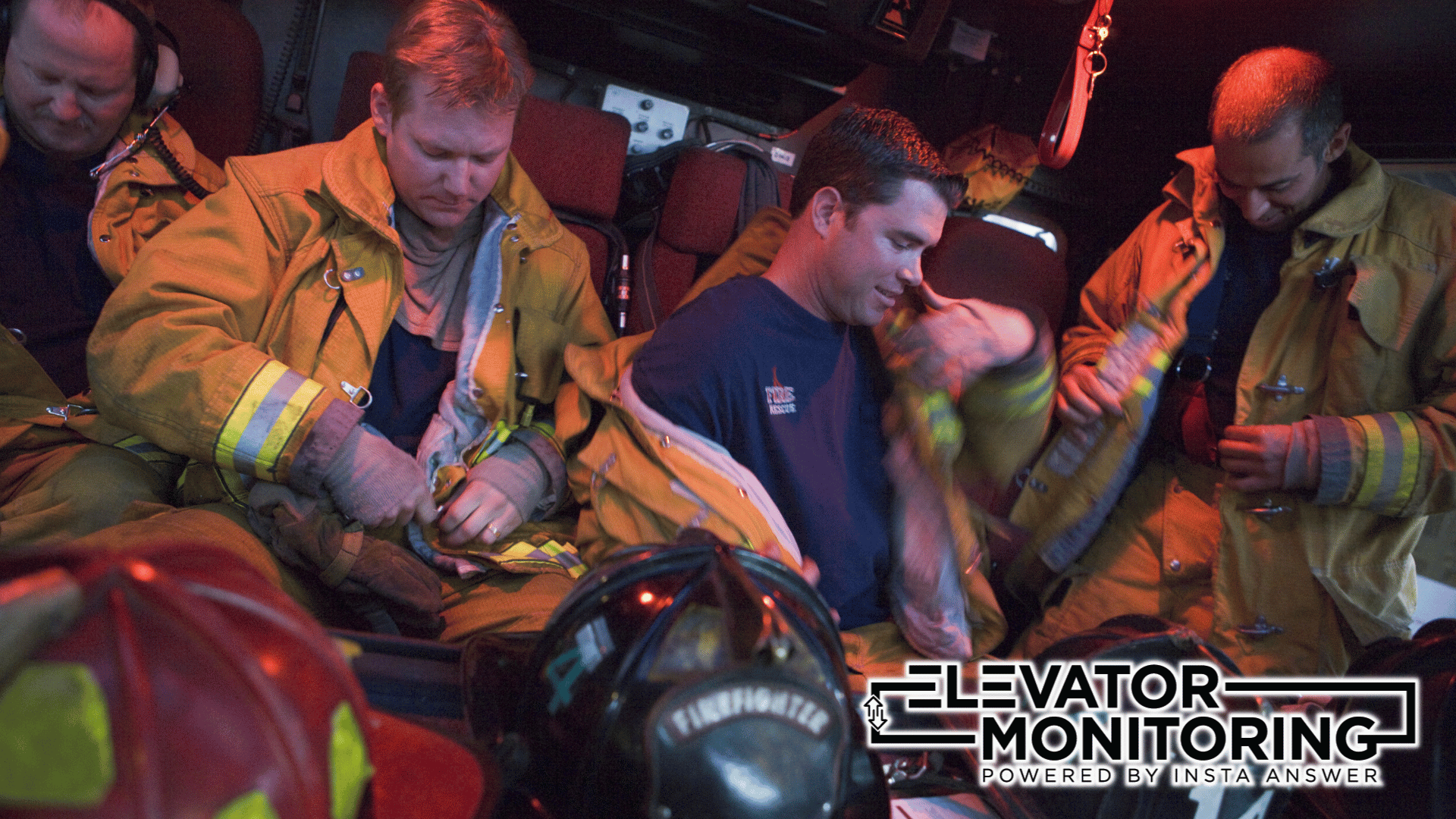

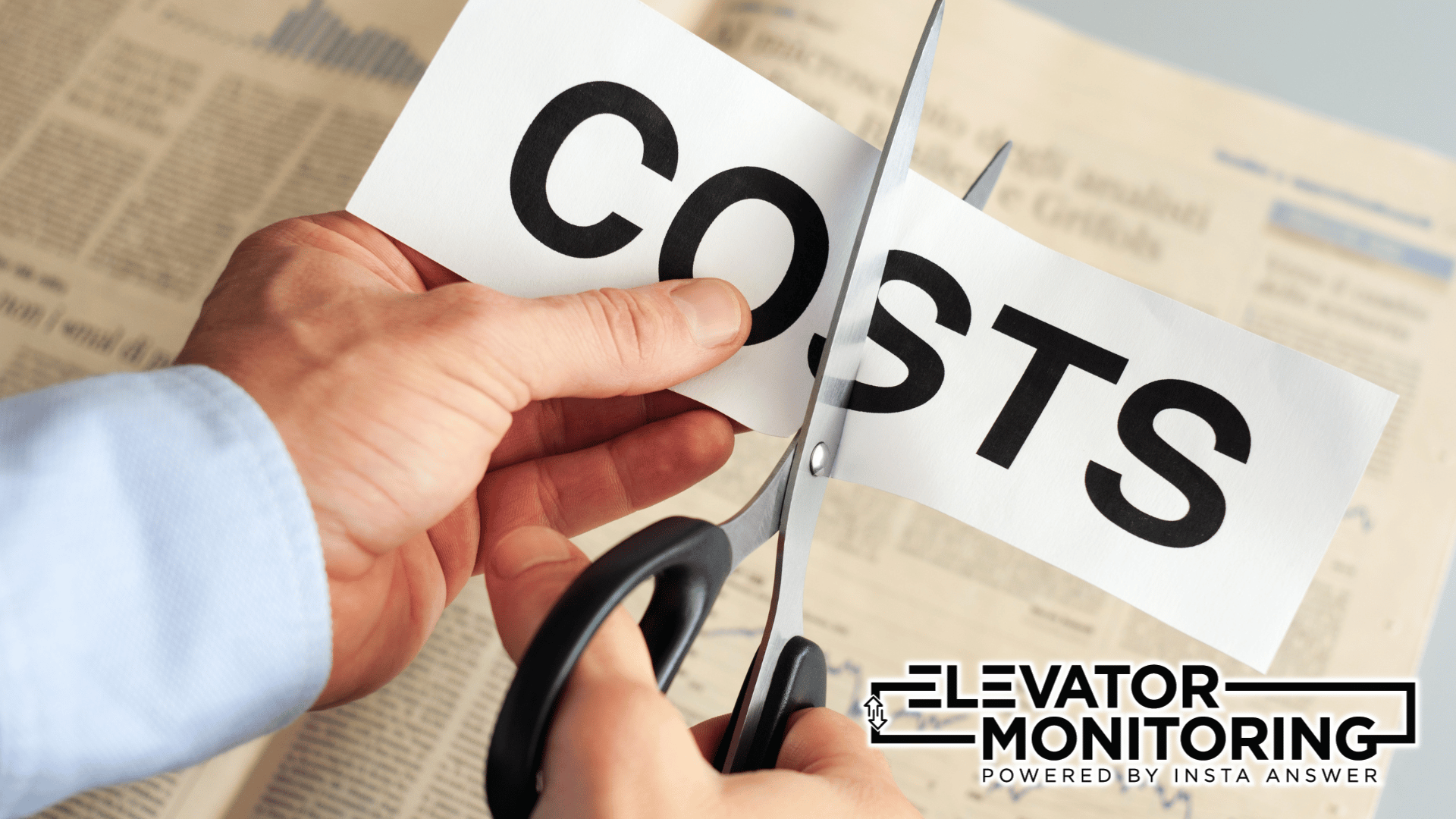 Maintenance Cost Savings
Maintenance Cost Savings
